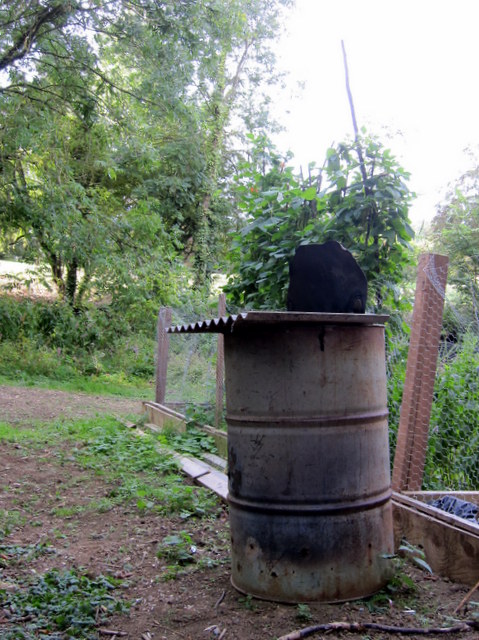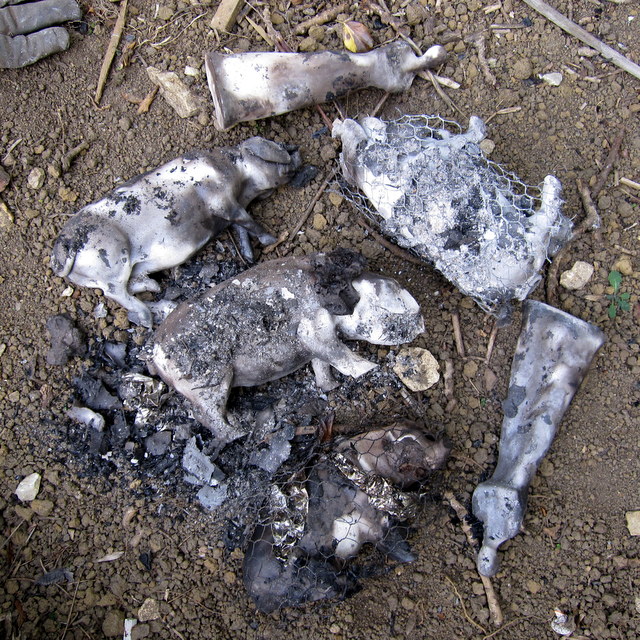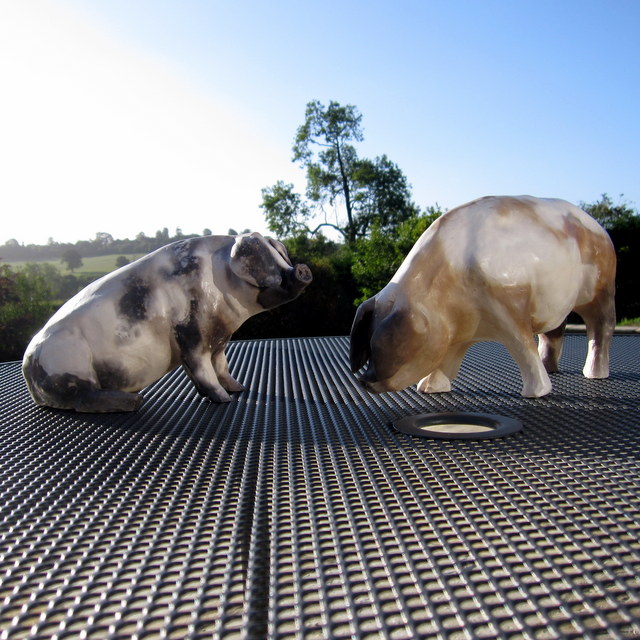Smoke firing is one of the techniques I use to produce varied markings on my small ceramic sculptures. Like naked raku, it is an organic method which utilises the elements of fire, water, air and earth (in the form of clay) in all their infinite variety, producing results which are never quite the same twice.

Slow burn
Pieces are first fired in the normal way (biscuit fired) in an electric kiln. Depending on the effect I wish to produce, I will then mask off certain areas, and leave other parts to be affected by the smoke. As with naked raku the method involves starving a fire of oxygen, so that it will then draw oxygen out of the fired clay pieces, and the markings are drawn into and become part of the piece, rather than sitting on the surface like a glaze.
For smoke-firing, the masking is done with wet ‘groggy’ clay, and it is also possible to place pieces of fired clay or broken pot to make a partial mask. My smoke firing is carried out in a metal barrel in my garden, and by using different types of sawdust and wood shavings, together with other organic materials to completely surround and cover the pieces, a variety of markings can be achieved.
Once the barrel is packed, a fire of paper and small pieces of wood is lit above the wood-shavings. Once the fire is established and the wood-shavings alight, the barrel is closed almost completely, so that the fire will then burn very slowly over a number of hours, and produce the smoke markings as described above.

Smoke-fired finish
Smoke-firing produces a whole range of colours from black through greys and browns, with the occasional flash of bluey tones or pinks. If I want to produce more dramatic and distinct black and white markings, I would probably use naked raku instead.
Both methods require the pieces to be thoroughly cleaned to reveal the markings and remove unwanted deposits of ash and remnants of the clay masking. Once clean and dry, they are protected with a thin coat of beeswax.
The wax protects both the piece and the markings, but like all patinated sculptures smoke-fired pieces should not be left for long periods inside a window facing the sun, as over time this could affect the markings.

